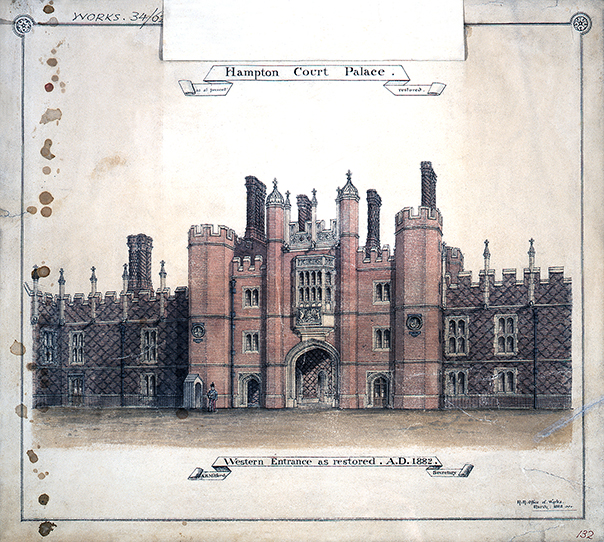
Hampton Court Palace was built around 1520 by a very wealthy and powerful man called Thomas Wolsey. Wolsey was Archbishop of York, he was one of the most senior priests in England at the time and he was also King Henry VIII’s close friend. There was already a great house on the site, but Wolsey transformed it into a fantastic palace. As soon as King Henry saw the palace, he wanted it for himself. In 1528 Wolsey gave Hampton Court Palace to King Henry and it remains the property of the Queen even today. ‘Tudor’ style of architecture is actually a mixture of several important styles at the time. Tudor buildings often included oriel windows (balcony windows that jutted out from the wall) and also low wide arched doorways, patterned brickwork and patterned chimneys.
Look carefully at the document entitled Hampton Court Palace.
Fascinating Fact: Hampton Court has the largest collection of decorative chimneys in England, a staggering 241 decorative chimneys! Each chimney stack design is unique.
- Look at all the detail in this sketch of the building. How do you think the artist created this sketch? Do you think the artist used paints, pencils, wax crayons, felt pens or ink? Could there be a reason why the artist chose to sketch the Palace with certain materials?
- List all the different building materials that you can spot in this sketch of Hampton Court Palace.
- Imagine you are standing exactly where the artist stood when this sketch was made. What impression does Hampton Court Palace make on you? How does it make you feel? What do you like and what do you not like about the building?
- If Hampton Court Palace was a person what would that person be like? (quiet, a show-off, wise, silly, funny, serious, easy going, angry, attention seeking).
- What was the function of this building? (Clue: It was built by someone very important and later given to an even more important person. Think about the message each of the owners of Hampton Court was trying to give to visitors)
